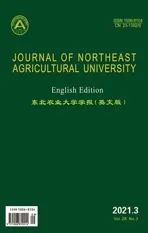Optimum Combination Test of Erosion Gully in Black Soil Regions by Coal Gangue Reconstruction Soil
2021-10-21WangZhongboLiDianxingZhangJinboandWangBin
Wang Zhong-bo , Li Dian-xing, Zhang Jin-bo, and Wang Bin *
1 Key Laboratory of High Efficiency Use of Agricultural Water Resources, Ministry of Agriculture, Harbin 150030, China
2 School of Conservancy and Civil Engineering, Northeast Agricultural University, Harbin 150030 China
Abstract: The black soil area in northeast China is greatly affected by hydraulic erosion.To inhibit the development of gully cutting and the secondary erosion on farmland, different size coal gangues and covering soils with change thicknesses combinations were selected to fill in-situ gully for hydraulic performance experiment.The hydraulic performance indexes of different combinations of large and small size gangue thicknesses and covering soil thicknesses were analyzed by the extreme learning machine (ELM) and particle swarm optimization (PSO).The results showed that the structure of large and small size coal gangues and surface soil under different thicknesses was affected by hydraulic and gravity.With the change of the thicknesses of coal gangue and covering soil, its effective channel and vertical infiltration process became more and more stable with the increase in drainage time, while the structure of small size coal gangue was the main hydraulic factor in reconstructed soil structure (p=0.016).The overall drainage performance showed a single peak trend, the optimal combination of drainage parameters and structure thickness was relatively concentrated; the drainage time parameters of different composite structures were found to have a certain linear relationship; the Pareto optimum of drainage performance was determined.The optimum thickness was 30-40 cm for large-sized gangue, 30-60 cm for small-sized gangue, and 50-70 cm for covering soil, to meet the relatively good drainage performance and to ensure that secondary erosion was reduced, so as to achieve the purpose of controlling the gully.
Key words: soil reconstruction, coal gangue, drainage performance, structural optimization
Introduction
Northeast black soil region is an important grain production base in China (Guet al., 2018), but under the influence of natural factors and human activities, the area of cultivated land in black soil region is decreasing year by year, and the phenomenon of soil and water resources loss and soil degradation is becoming more and more serious (Fanet al., 2013; Cominoet al., 2016).Soil erosion in the black soil region is more serious, due to the interaction of various external forces, and the gully cutting caused by hydraulic erosion is obvious (Fanet al., 2005; Guet al., 2015).It makes the original completely cultivated land fragmented and reduces the land use rate, but also reduces the efficiency of agricultural production and crop yield (Huet al., 2018; Wanget al., 2018).
Due to the limitations of the traditional land leveling method, scholars have put forward the soil reconstruction theory (Wanget al., 2018).The purpose of soil reconstructed is to reconstruct damaged soil, apply engineering and ecological measures, reconstruct soil profile and soil fertility factors, improve the productivity and the environmental quality of damaged soil in a short time.Its materials can be adapted to local conditions (Xuet al., 2018; Huet al., 2018; Wanget al., 2016; Danget al., 2012).The filling material chooses the solid waste coal gangue in the process of mining in the local coal mining area.Rational digestion and disposal of coal gangue can reduce the pressure of land use, make scientific integration and utilization of resources, and achieve remarkable economic and ecological benefits (Liuet al., 2018).The research on the theory of reconstructed soil is mainly concentrated in the coal mine subsidence area (Huet al., 2017; Marzolffet al., 2017; Wanget al., 2017), the researches on gully cutting of sloping farmland to reconstruct soil in the black soil region of northeast China are not perfect.It′s also not clear how to reconstruct the soil structure.Therefore, the key of this study was to determine the soil combination structure of coal gangue filling gully, transform surface runoff into underground drainage, and decrease the secondary erosion caused by heavy rainfall.In this paper, the fieldin-situgully in the black soil area of northeast China was used for the experiment.The coal gangues of different thicknesses and sizes were used as the filling base materials.Large size coal gangue was filled to the bottom of the cutting gully, small size coal gangue was placed on the large size coal gangue layer and then covered the surface soil to ensure soil infiltration and control soil loss.Determination of the hydraulic performance of large and small size coal gangues and surface soil combination with different thicknesses, and comparing different combinations of reconstructed soils, the optimal combination of reconstructed soil structure and thickness was obtained.This study not only explained the hydraulic characteristics of the reconstructed soilfilled gully with coal gangue in the black soil area of northeast China, but also provided a new idea for soil erosion control in the black soil region of northeast China.
Materials and Methods
Overview of research areas
The experiment was located in the small watershed of Wulong River, which located in the sub-region of the Songhua River downstream plain of Sanjiang Plain.The geographical position is 130°03′04′′E,47°03′05′′N, which is located at the junction of the southern part of Hegang City, Heilongjiang Province.The topographic type of the site is hilly, high in the northwest, and low in the southeast.The Wulong River small watershed belongs to the mid-temperate continental monsoon climate with four distinct seasons, and the rainfall is concentrated in summer with high rainfall intensity.The precipitation from July to September accounted for 80% of the total annual precipitation.The annual average precipitation was 515 mm, the annual average runoff depth was 150 mm, the annual average temperature was 3.6℃, the annual average frost-free period was 127 days, the effective accumulated temperature (>10℃) was 2 455℃, the annual sunshine time was 2 260 h, and the annual average wind speed was 3.6 m • s-1.The total area of the basin was 2 917.22 hm2, the cultivated land area was 1 387.08 hm2, the soil and water loss area was 1 388.47 hm2, and the slope of soil and water loss occured in the range of 0.25°-5°.The erosion modulus was 1 550 t • km-2• a-1, the surface soil loss was 215 000 t • a-1and the density of the gully was 0.18 km·km-2.
Experimental material
In this experiment, the gangue was collected from Hegang Coal Mine.Large-sized gangue (LSG) and small-sized gangue (SSG) were screened artificially.The soil used in the experiment came from the farmland of Xinhua Farm.The physical and chemical properties are shown in Table 1.

Table 1 Physical and chemical properties of experimental coal gangue and soil physical properties
Experimental design
The field experiment was carried out on thein-situgully of Xinhua Farm in the south of Hegang City, Heilongjiang Province.The width of the gully was 0.8 m and the depth was 2.0 m.The experimental soil bin (length 1.5 m, width 1 m and depth 2.2 m) was designed and formed at the end of the gully for filling coal gangue and surface soil with different thicknesses.The retaining wall with upper and lower water conduits was used to collect the seepage at downstream of gully, the reconstructed soil bin was filled with the coal gangue and covering soil at upstream of gully, as shown in Fig.1.
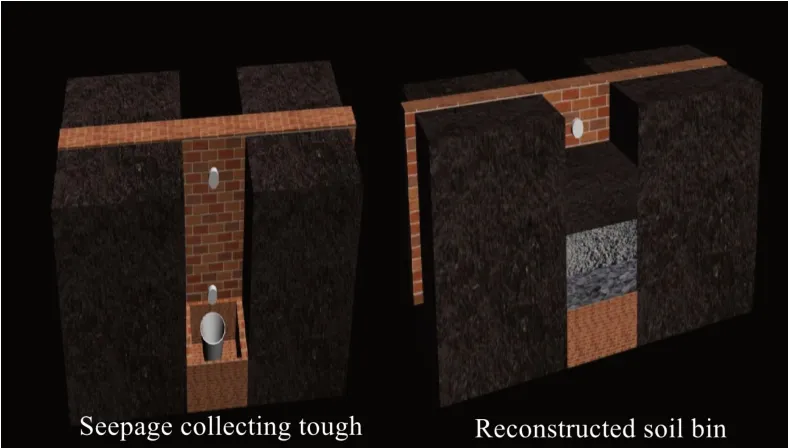
Fig.1 Schematic diagram of in-situ erosion gully soil-bin structure
The response surface methodology (Ziet al., 2017) was used to design the arrangement and combination of large and small size coal gangues and surface cover soil with different thicknesses and arranged to obtain 30 groups of treatments, as shown in Table 2.The hydraulic performance of each treatment was tested in the form of vertical infiltration.The water injection time and the water injection flows were 180 s and 3 L • s-1, respectively, the treatments were repeated three times.From the bottom to the top, the reconstructed soil structure was a large size coal gangue layer (LSG), a small size coal gangue layer (SSG) and a surface soil layer (SS).The large size coal gangue was used to ensure the conductivity of drainage and overall structural stability, it also increased the conversion rate of surface runoff to underground drainage.The small size coal gangue as a filter layer reduced surface soil settlement and reduced soil loss, surface soil constructed crop environment demand.
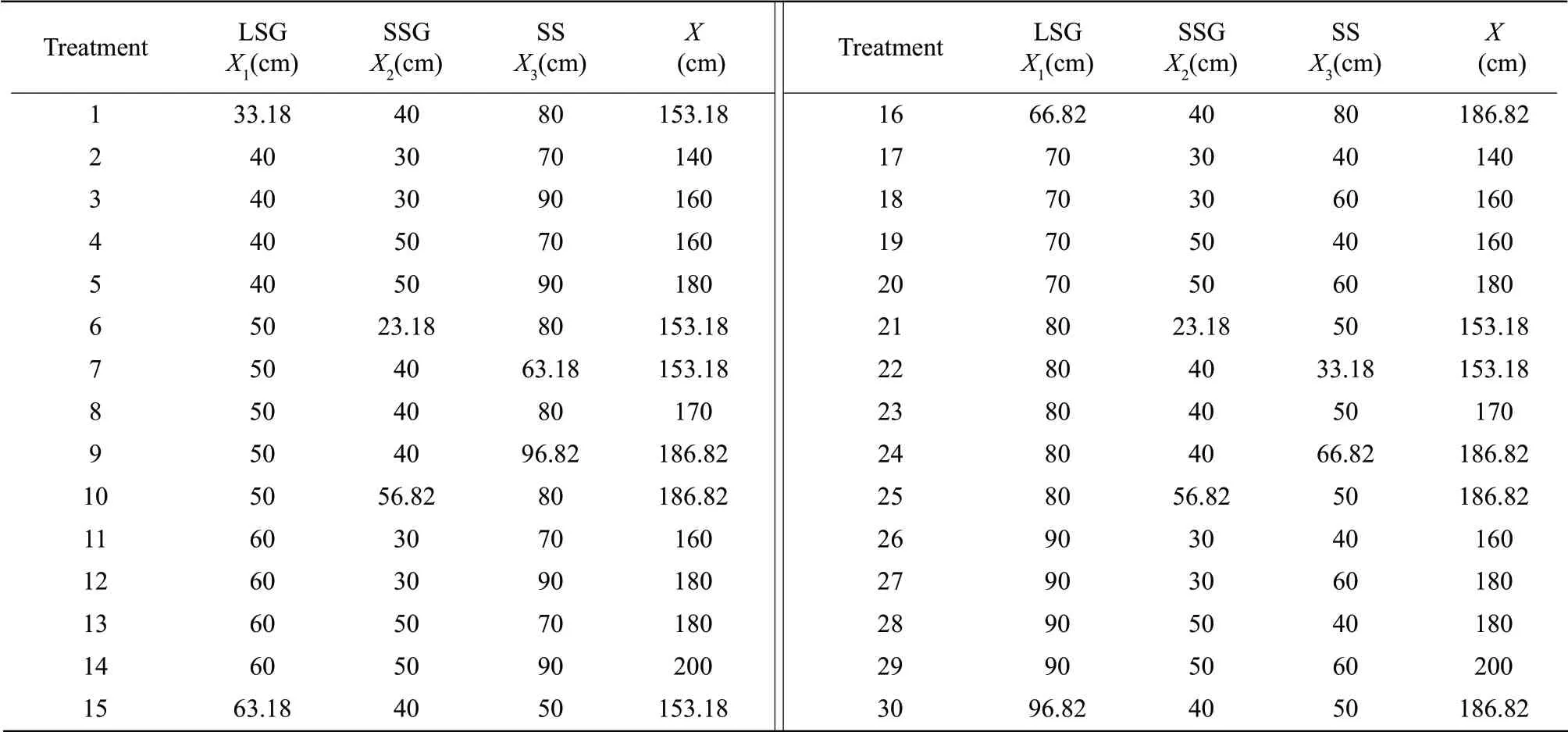
Table 2 Reconstructed soil groups of coal gangue thickness and overburden thickness of soil size
Observation indicators and methods
During the experiment, the flow timeTswas recorded to calculate the initial flow rate (VIR), when the lower water conduit drained.Through pre-test, it was found that the outflow state was stable, when the flow rate reached 80-85 L, and the stable diversion timeTmwas recorded at this time to calculate the steady flow velocity (VFR).When the lower end of the retaining wall had no outflow at the time of recording the end timeTfand the outflowQto calculate the average flow rate and the irrigation/discharge ratioIDRand the experiment ended, and formulas were as the followings:
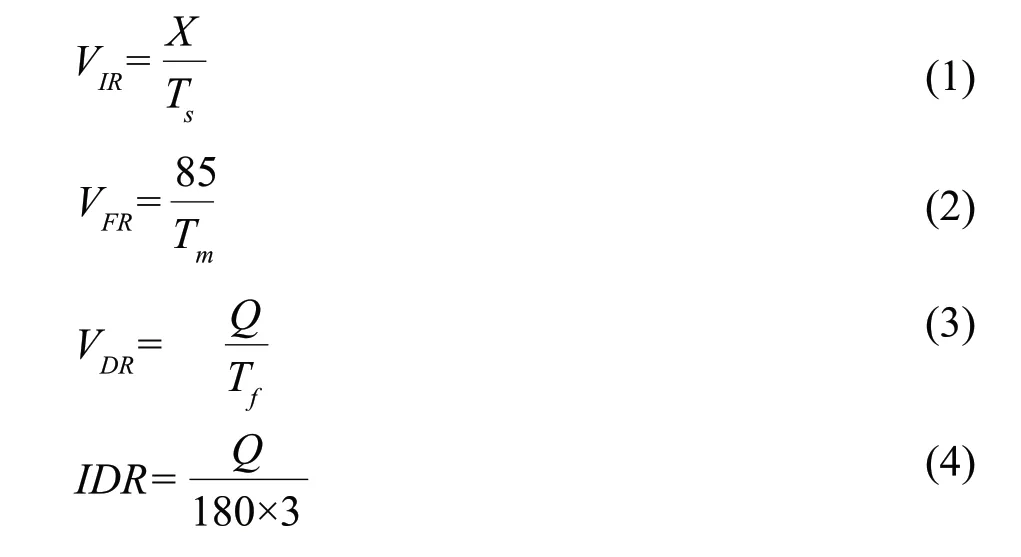
Multivariate linear regression was used to reconstruct the large and small size gangue thickness and soil thickness in the soil as independent variables, and the water conduction time of each treatment was fitted and analyzed.The relationship between the time parameters of performance estimated whether the important time and outflow in the case of heavy rainfall in the field met the structure of drainage requirements.After fitting the drainage parameters of the reconstructed soil by the extreme learning machine (ELM) (Huanget al., 2005), the particle swarm optimization algorithm (PSO) (Gillet al., 2006; Hosseiniet al., 2017) was used to determine the combination of different size coal gangue thicknesses and surface soil thicknesses after optimization of time parameters and drainage parameters, the optimum structure combination for reconstructing soil drainage performance could be obtained.
Data processing method
Using Origin and Excel software for basic data processing and plotting, using SPSS to perform multivariate linear regression analysis of time parameters, using the least significant difference method (LSD) in multivariate variance method to compare the time parameter differences of each reconstructed soil structure, significant level 0.05, using Matlab software to guide the drainage and drainage parameters and optimize the combination.
Results
Effect of large and small particle size coal gangues and surface covering soil with different thicknesses on drainage
The variances for outflow time (Ts), stable diversion time (Tm), end time (Tf) and outflow (Q) of reconstructed soils under different thickness combinations were analyzed.The thickness of the small size coal gangue was in the range of 30-56.82 cm with a significant difference betweenTs,Tm,TfandQ(P=0.016).The results are shown in Fig.2.
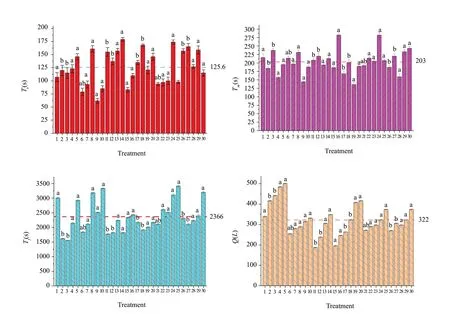
Fig.2 Reconstruction soil of time parameters and outflow Lower case letters indicate significant differences (p<0.05) for 30 groups of tests, parameters with the same letter are not significant.
Through the analysis of the time parameters and outflow of the reconstructed soil drainage performance, it was found that the time parameters and outflow of the 30 groups of reconstructed soils had obvious changes and the variation range was large.The relative changes of the maximum and minimum values ofTs,Tm,TfandQwere 288.71%, 207.35%, 214.92% and 268.18%, respectively.The proportions above the average group were 53.3%, 50%, 40% and 40%, respectively.The structure with small size coal gangue thickness of 30-56.82 cm had greater influence on time parameters and outflow than other combinations.For the thickness of surface soil, the corresponding grouping ranged from 70 cm to 96.82 cm accounted for the largest proportion.Parallel comparison of the thickness of large size gangue showed that 70-96.82 cm accounted for the largest proportion.
Multi-linear regression analysis was carried out on the time parameters of reconstructed soil drainage performance with large size gangue thickness (X1), small size gangue thickness (X2) and soil thickness (X3), and large size and small size coal gangues were obtained.The linear relationship between the thickness of large and small size gangues and surface soil on the time parameters of drainage was obtained, as shown in Table 3.

Table 3 Relationship of reconstructed soil drainage performance
By reconstructing the time parameter distribution figure of soil water conductivity and drainage performance, it was found that the corresponding time had a certain spatial relationship.
Through Fig.3a and b, it was found that different thicknesses of reconstructed soil structure had a positive spatial correlation with outflow time, stable diversion time and end time.Through comparing the fitting value of ELM and the experimental value, it was found that the errors were less than 0.1, the ELM training for fitting the parameters of drainage performance was excellent, as shown in Fig.3c and d.
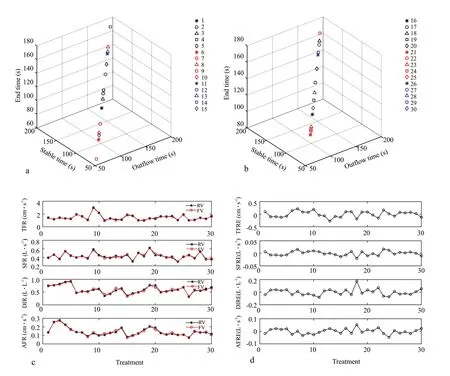
Fig.3 Relations of time parameters of reconstructed soil drainage with ELM regression analysis
Effect of large and small particle size coal gangues and surface covering soil with different thicknesses on drainage and drainage performance
The hydraulic performance parameters were analyzed by least square method.The large size coal gangue thickness, small size coal gangue thickness and surface soil thickness of 30 reconstructed soils were used as independent variables, and the initial hydraulic conductivity of four hydraulic properties were selected.The initial flow rate, steady flow rate, drainageirrigation ratio and average flow rate were used as the dependent variables, and the dependent variables were centralized and normalized.After the least square fitting analysis, the distribution relationship between the regression equations and the hydraulic performance indexes of the four reconstructed soils on the hydraulic performance parameters was obtained, as shown in Fig.4.
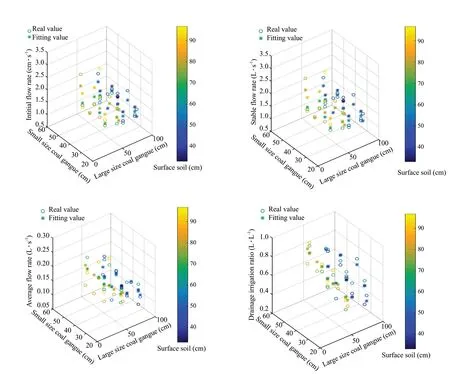
Fig.4 Spatial distribution of hydraulic performance of reconstructed soil structure
The maximum initial flow velocity was the 9th group (X1: 50 cm,X2: 40 cm,X3: 96.82 cm).The maximum stable water flow rate was the 9th group (X1: 50 cm,X2: 40 cm,X3: 96.82 cm).The best group corresponding to the simulated maximum value was the second group (X1: 40 cm,X2: 30 cm,X3: 70 cm).The best irrigation and drainage ratio group was the 5th group (X1: 40 cm,X2: 50 cm,X3: 90 cm).
The thickness of each reconstructed soil structure had a good promoting relationship with its drainage performance parameters, and its corresponding four hydraulic performance parameters corresponded to the reconstructed soil structure thickness compared with the concentrated large size coal gangue 50-70 cm.The thickness of the small size coal gangue was 30-60 cm, and the thickness of the surface soil was 40-70 cm, which was related to the influence of hydraulic and gravity on the internal structural pores of the reconstructed soil.
Reconstruction soil structure combination optimization
The optimized initial flow rate, stable flow rate, drainage-irrigation ratio and average flow rate were obtained by ELM regression analysis.The optimized hydraulic performance parameters were used as the analysis dependent variablesF(Y1,Y2,Y3andY4).Different soil thicknesses were used as independent variablesF(X1,X2andX3) for reconstructed soil combination optimization.SetFmax(Y1,Y2,Y3andY4) as the objective function 1,Fmin(X1,X2andX3)=X1+X2+X3as the objective function 2, the number of iterations was 100, the learning factorsc1 andc2 were 2, the inertia weightωwas 0.5 to obtain the Pareto optimal set.
The PSO algorithm was used to optimize the reconstructed soil combination to obtain Table 4.The large size coal gangue was distributed in the range of 30-40 cm, and the small size coal gangue thickness range was within 30-70 cm.The thickness distribution of small size coal gangue was mainly concentrated in 30-60 cm and the thickness range of the surface soil was 40-50 cm, the total height range of the reconstructed soil structure was 90-140 cm.It was found that the thickness of the covering soil should be increased by 10-20 cm on the basis of the combined soil thickness was more reasonable, so the thickness of the covering soil was determined to be 50-70 cm, that was, the reconstructed soil structure was 30-40 cm thickness with large size coal gangue, 30-60 cm with small size coal gangue, and surface soil was 50-70 cm thickness.At the same time of better performance, it could also ensure that the reconstructed soil structure was reasonable.
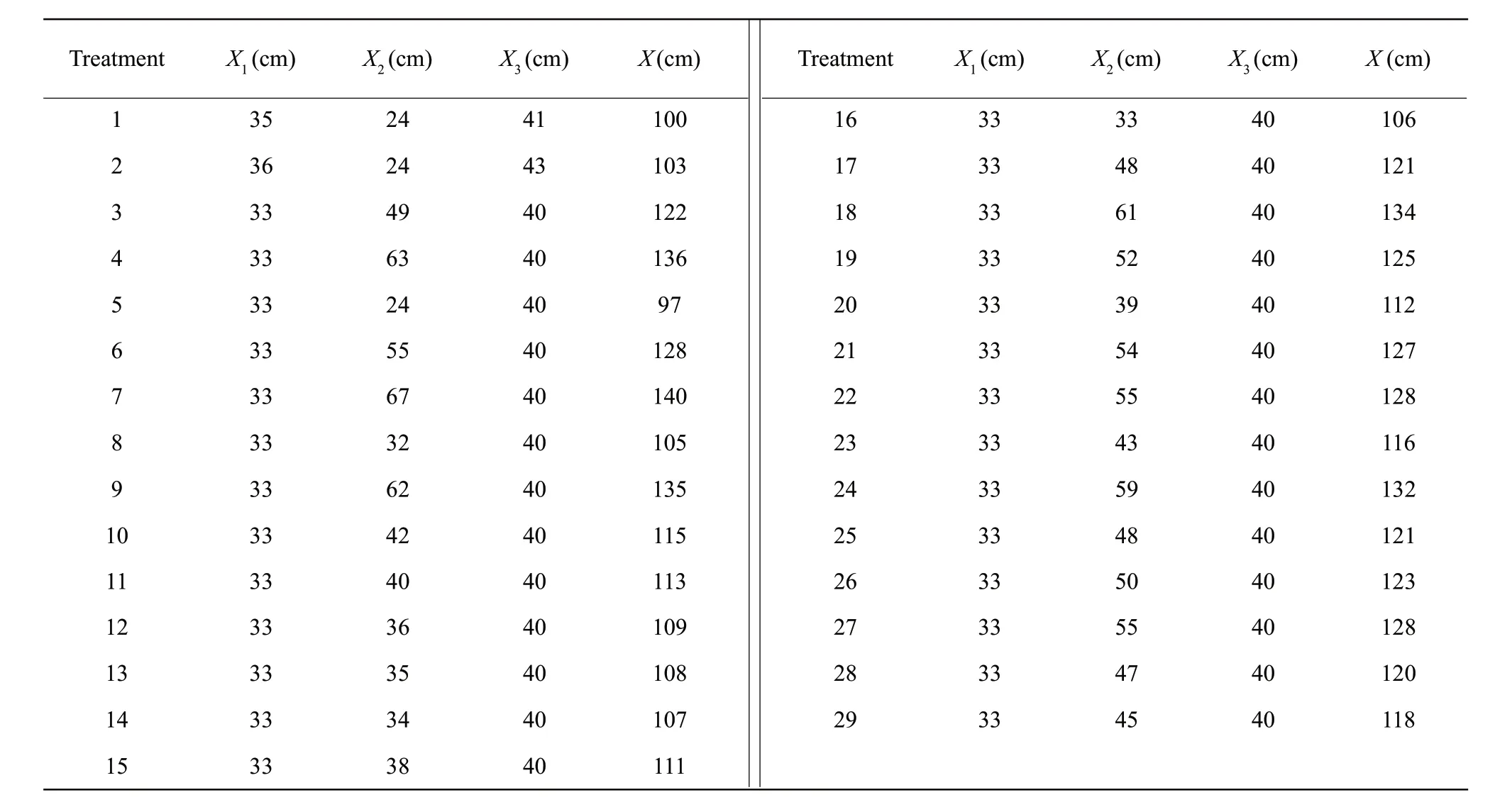
Table 4 Optimized reconstructed soil structure combination by multi objective particle swarm
Discussion
Reconstructed soil common regularity
Soil water movement was the core problem that needed to be solved in the process of soil and water conservation (Zhou and Shao, 2017; Maet al., 2014).Through the soil hydraulic properties experiments of different combinations of reconstructed soil structures, it was found that the hydraulic properties of the soil structure were significantly changed, due to different matrix materials and different structures (Stirzakeret al., 2017).Because the soil water had the phenomenon of lateral diffusion and vertical downward seepage, the initial flow velocity was small.The reconstructed soil structure in this experiment was a little different with the normal filled coal gangue reclamation structure and normal agricultural soil results.Therefore, the hydraulic characteristics test results were dependent with the reconstructed soil matrix selection and grade, the internal pore distribution had a certain relationship.Through quantitative analysis of the infiltration process of reconstructed soil, the infiltration process of reconstructed soil was basically consistent with that of natural agricultural soil, and the overall infiltration process showed a single peak trend.The internal pore of reconstructed soil would change under the action of both hydraulic and gravitational forces during water transport.Large size gangue was used as filling matrix and small size gangue was used as filling medium.In the whole structure, small size gangue and surface soil settled and filled into large size coal gangue pore.Meanwhile, surface soil filled into small size coal gangue pore.Therefore, small size coal gangue was the main factor in reconstructing soil structure (p=0.016), which had a certain reference significance for the selection of soil structure matrix and particle size combination for reconstructed soil structure in the future.
Reconstructed soil diversion regularity
At the initial stage of reconstitution of soil infiltration process, water movement rushed soil aggregates, and soil aggregates had certain internal force and dispersibility for water, soil particles and small size coal gangue filled the large pores in the reconstructed soil structure and had obvious resistance and buffer to soil water infiltration.Reconstruction soil structure reduced the amount of soil lost during concentrated rainfall.In the process of water infiltration, since the soil water needed to infiltrate from the surface layer of the soil layer, the pores of the soil layer were small, and it was necessary to reach a certain amount of water to start the drainage.Different thickness structures of large size coal gangue, small size coal gangue and covering soil had certain subsidence and interaction, and the reconstructed soil was slightly different from the drainage process of normal farmland soil.Through experiments, it could be found that the higher the total height of the reconstructed soil, the hydraulic performance was not necessarily the better.Through the quantitative test of reconstructed soil infiltration, it was found that there was no obvious regularity of the infiltration rate in the reconstructed soil, so the drainage of the reconstructed soil showed obvious non-uniformity.
In the reconstructed soil structure, due to the large pore of the large size coal gangue matrix layer, the small size coal gangue and the covering soil layer had smaller pores and voids, so the soil structure had a certain flow channel, which was found during the test.When the flow rate was between 60 L and 80 L, the remodeling soil flow state and its internal diversion process were relatively stable, the diversion channel was filled with soil moisture, and the continuous infiltration rate of water reached a peak value.The infiltration rate of the stable was the steady diversion rate.At this time, the vertical movement of water movement was the equilibrium state.The peak value could also quantify the size and distribution of the effective diversion channel in the reconstructed soil structure.
For the reconstructed soil with different structures, the corresponding continuous water seepage capacity and drainage capacity were also different (Liu and Duan, 2019).The most obvious was that the irrigation and drainage ratio had a certain periodicity under the condition of quantitative precipitation, that was, the longer of period, the increasing trend in the cycle when the thickness of coal gangue and covering soil increased.Because of its overall height increase, its water storage capacity and continuous drainage capacity were stronger, and the infiltration capacity was better, which had a good effect on reducing the secondary erosion and also made rational use of land resources.
Conclusions
The hydraulic characteristics of the reconstructed soil structure were affected by the filling material and the thickness of the structure.The time parameter changes of the reconstructed soil were obvious.The main influencing factors small size coal gangue (p=0.016) not only played a role in filtration, but also acted as a middle medium for rebuilding the drainage performance of the soil to promote the water movement of the reconstructed soil.
The drainage performance of the reconstructed soil structure showed non-uniformity.The reconstructed soil structure under the action of hydraulic force, gravity and soil internal force in the initial stage, the original reconstructed soil structure and internal water channel changed, and the internal structure increased with the diachronic structure.The effective diversion channel and the vertical water movement inside the reconstructed soil structure reached an equilibrium state.
Through ELM and PSO, it was found that the hydraulic performance indexes of different results also had different trends, due to different structural properties of the reconstructed soil.The infiltration performance had a single peak trend, which had obvious non-uniformity and spatial variability.The optimal structure for reconstructed soil hydraulic performance was determined by Pareto optimality, that was, the thickness of large-diameter coal gangue was 30-40 cm, the thickness of small-diameter coal gangue was 30-60 cm, and the thickness of covering soil was 50-70 cm.
杂志排行
Journal of Northeast Agricultural University(English Edition)的其它文章
- Water Consumption Processes of Different Planting Models in Rice Production of Northeast China
- Effect of Chilling Stress on Synthesis of Antioxidant Enzymes, Osmotic Adjustment Substances and Membrane Lipid Peroxide Levels in Two White Clover Cultivars
- Complete Genome Sequencing and Analysis of Rehmannia Mosaic Virus Isolate from Shanxi Province
- Reversal Effects of Ivermectin and Moxidectin on Multidrug Resistance in C6/adr Cells in vitro
- Effects of DHRS3 in C2C12 Myoblast Differentiation and Mouse Skeletal Muscle Injury
- Effects of Lanthanum and Cerium on Seeds Fatty Acid Composition in Soybean
